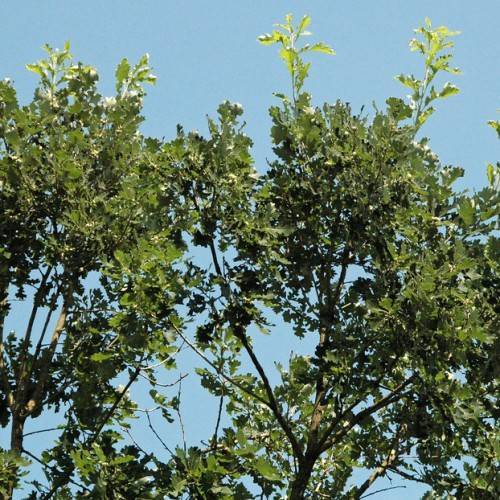
bur oak
Quercus macrocarpa
Cycle:
Perennial
Watering:
Minimum
Hardiness Zone:
3 - 8
Flowers:
Flowers In Spring
Sun:
Full sun, Part sun/part shade
Soil:
Sandy Loamy Rocky
Fruits:
Fruits In Autumn Ready In
Leaf:
Yes
Growth Rate:
Low
Maintenance:
Low
Drought Tolerant:
Yes
Salt Tolerant:
Yes
Care Level:
Medium
watering
Bur oak (Quercus macrocarpa) can tolerate a variety of soil types and planted in full sun to partial shade. It is important to keep this tree’s soil slightly on the dry side and avoid overwatering. Newly planted bur oaks should be watered deeply twice a week, or every other day if it is hot or windy. Established bur oaks need to be watered every week or 2 during spring and summer. After the tree has been established, water it deeply every 7–10 days during hot, dry periods; in cooler weather, this watering schedule should be reduced. Water the root zone for at least 15–20 minutes, or long enough for water to penetrate several inches of soil.
sunlight
Bur Oak (Quercus macrocarpa) is a deciduous tree native to North America. It prefers full sun and can tolerate partial shade, however it needs at least 6 hours of direct sunlight each day for optimal health and growth. That said, the bur oak can tolerate extreme temperatures and is very hardy. It does well in both wet and dry soils, but will thrive in well-drained, loamy soils. To ensure good growth and health, it does best if planted in a spot where it will receive at least 6 hours of full sun each day.
pruning
Bur oak (Quercus macrocarpa) is best pruned during the early stages of its growth. When deciding when and how much to prune a bur oak, it is important to consider its size, growth rate, and growing environment. In general, pruning should be done during the dormant period in late fall or early winter. If pruning must be done during the growing season, then mid-summer is the preferred time. As with all trees, it is important to make sure that only dead or damaged branches are removed; do not prune healthy, vigorous branches. When pruning, take care not to remove more than 1-third of the branches in a single season. This will help prevent shock to the tree and help maintain its shape. If necessary, thin the branches by removing small twigs to allow more light to reach the interior of the tree. Additionally, it is important to prune away any branches that rub against each other. Bur oaks have a slow to moderate growth rate, so they will not need to be pruned as frequently as faster-growing trees. But if the tree has become heavily pruned in the past, it is important to prune each year in order to bring the tree’s canopy back into a balanced shape. If pruning is neglected, the tree can become out of shape and overgrown.
